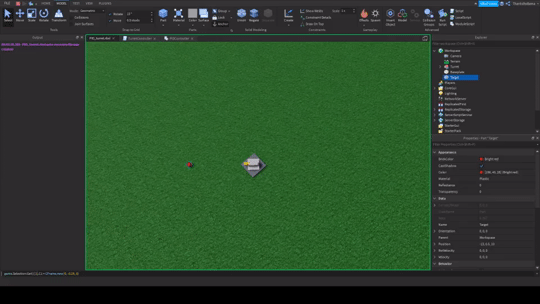Nice! 
Here’s what I’ve come up with, it only rotates on the yaw axis, I was thinking it’d be interesting to have yaw and pitch be different “hinges” / Motor6Ds:

TurretController
local RunS = game:GetService("RunService")
local PIDController = require(game.ServerStorage.PIDController)
PIDController.update_time_on(RunS.Heartbeat)
local turret = script.Parent
local turretBase = turret.Base
local yawBase = turret.YawAssembly.YawBase
local yawMotor = turret.Base.YawMotor6D
local target = game.Workspace.Target
local yaw_velocity = 0
local yaw_controller = PIDController.new_PID_controller(10, 0, 3, .1)
RunS.Heartbeat:Wait()
RunS.Heartbeat:Connect(function(dt)
local object_horizontal_offset = yawBase.CFrame:PointToObjectSpace(target.Position)
local object_yaw_angle = math.atan2(-object_horizontal_offset.X, -object_horizontal_offset.Z)
local yaw_force = yaw_controller(0, object_yaw_angle)
yaw_velocity += yaw_force * dt
yawMotor.C1 *= CFrame.Angles(0, yaw_velocity * dt, 0)
end)
PIDController Module
local t = tick()
local update_c
function update_time()
t = tick()
end
function update_time_on(event)
if update_c then
update_c:Disconnect()
end
update_c = event:Connect(update_time)
return update_c
end
function new_P_controller(kP)
return function(SP, PV)
local e = SP - PV
return kP * e
end
end
function new_I_controller(kI, example_value)
local prev_t = t
local sum_e = 0 * (example_value or 0)
return function(SP, PV)
local dt = t - prev_t
prev_t = t
local e = SP - PV
sum_e += e * dt
return kI * sum_e
end
end
function new_D_controller(kD, initial_error)
local prev_t = t
local prev_e = initial_error
return function(SP, PV)
local dt = t - prev_t
prev_t = t
local e = PV - SP
local de = e - prev_e
local de_dt = de / dt
prev_e = e
return kD * -de_dt
end
end
function new_PID_controller(kP, kI, kD, initial_error)
local P_controller = new_P_controller(kP)
local I_controller = new_I_controller(kI, initial_error)
local D_controller = new_D_controller(kD, initial_error)
return function(SP, PV)
return P_controller(SP, PV)
+ I_controller(SP, PV)
+ D_controller(SP, PV)
end
end
local Module = {
update_time = update_time,
update_time_on = update_time_on,
new_P_controller = new_P_controller,
new_I_controller = new_I_controller,
new_D_controller = new_D_controller,
new_PID_controller = new_PID_controller,
}
return Module
I haven’t put the PID module on the tutorial thing because I’m not quite happy with it yet, I want to polish it a bit more before releasing it properly.
EDIT: Added the pitch Motor6D w/ a separate controller, here’s a video:

... and here's the updated TurretController
local RunS = game:GetService("RunService")
local PIDController = require(game.ServerStorage.PIDController)
PIDController.update_time_on(RunS.Heartbeat)
local turret = script.Parent
local yawBase = turret.YawAssembly.YawBase
local pitchBase = turret.YawAssembly.PitchAssembly.PitchBase
local yawMotor = turret.YawBase.YawMotor6D
local pitchMotor = turret.YawAssembly.PitchBase.PitchMotor6D
local target = game.Workspace.Target
local yaw_velocity = 0
local pitch_velocity = 0
local yaw_controller = PIDController.new_PID_controller(8, 0, 5, .1)
local pitch_controller = PIDController.new_PID_controller(10, 0, 2, .1)
RunS.Heartbeat:Wait()
RunS.Heartbeat:Connect(function(dt)
local object_yaw_offset = yawBase.CFrame:PointToObjectSpace(target.Position)
local object_yaw_angle = math.atan2(-object_yaw_offset.X, -object_yaw_offset.Z)
local yaw_force = yaw_controller(0, object_yaw_angle)
yaw_velocity += yaw_force * dt
yawMotor.C1 *= CFrame.Angles(0, yaw_velocity * dt, 0)
local object_pitch_offset = pitchBase.CFrame:PointToObjectSpace(target.Position)
local object_pitch_angle = math.atan2(object_pitch_offset.Y, -object_pitch_offset.Z)
local pitch_force = pitch_controller(0, object_pitch_angle)
pitch_velocity += pitch_force * dt
pitchMotor.C1 *= CFrame.Angles(pitch_velocity * dt, 0, 0)
end)


